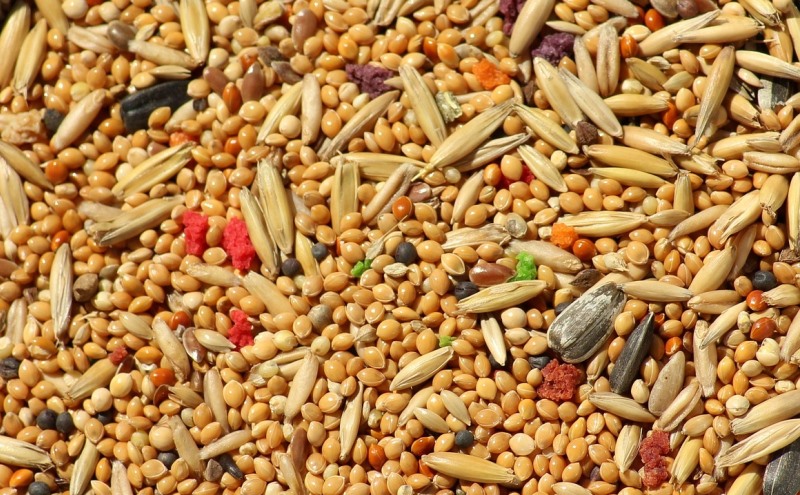2023 is the International Year of Millets

The year 2023 has been declared as the International Year of Millets. At its seventy-fifth session, the United Nations General Assembly had made this declaration to raise awareness, attention and promote the production of millets and its benefits. This is the need of the hour since the cultivation and demand for millets has declined over a period of time. The decline corresponds to an increase in the production and demand for other cereals such as corn, wheat and rice.
What are millets?
Millets are coarse grains, which are rich in fibres, proteins, vitamins and minerals and are therefore highly nutritious. Millets have been traditionally grown and consumed in the Indian subcontinent since over one thousand years. India is the top producer of millets, however, they are also widely grown in other regions of Asia, Africa in places such as China and Nigeria. Examples of millets include jowar (sorghum), bajra (pearl millet), ragi (finger millet), jhangora (barnyard millet) and kakum or kangni (foxtail millet).
As far as India is concerned, studies have suggested that the consumption of millets dates back to the Indus Valley Civilisation. The primary forms of millets in India are grown during the kharif cropping season. These millets require less irrigation, fertilisers and other agricultural inputs. This means that the cost of cultivating millets and purchasing agricultural inputs is less as compared to other crops. Farmers and consumers can benefit in multiple ways due to this if millets become a major part of everyday diet.
Farmers can sell millets at low prices, as the cost of cultivating them is less, making food and its ingredients cheaper for consumers. The Government of India has recognized the potential of millets and is promoting them in varous ways. The Government has rebranded millets as Nutri Cereals and had previously declared 2018 as the National Year of Millets. The Government has also made available a booklet on millet recipes from around the country. India has also sponsored the proposal for 2023 to be declared by the UN as the International Year of Millets (IYM).
Benefits from millets
Millets have many benefits which is why it is important to give them more attention than other food sources such as wheat, rice and corn. A key benefit is that millets have great nutritional value. Thus, if they are included in one’s diet, it makes for a much healthier diet. Regulating bowel function, optimizing blood sugar and lipids are some other health benefits of millets. Not only can millets be a great and economical source of iron, but they are also a great option for gluten intolerant persons, or those who have high blood sugar or diabetes. Millets are gluten-free and have a minimum effect on blood sugar levels.
Widespread consumption and demand for millets can create more opportunities for farmers, particularly those with low incomes, and improve their quality of life. This is because, by cultivating and selling millets, along with the other crops, farmers can earn more income from them and ensure better livelihood security for themselves.
Not sure where to buy? Click here to buy millets online!
With the help of millets, the rising demand for sufficient quantity and good quality food can be met. This can be the case even during ongoing global environmental changes like global warming and climate change and depleting natural resources. Due to the aforementioned scenario, food security is under a major threat and millets can be an ideal and more resilient alternative to grains. Millets can help make the global food market more resistant to such threats, and also reduce our reliance on other grains.
Millets are more climate resilient as compared to other crops. They are resistant to harsh climate conditions such as droughts. Millets can tolerate crop diseases and pests and can increase the efficiency, resilience, inclusivity of local agri-food systems. They can also support soil, reduce soil degradation and support biodiversity.
Millets not only have high nutritional value, but also have medicinal value. One example of this is that they contain insoluble fibre known as a prebiotic. Millets therefore support good bacteria in the digestive system. Innovative use of millets can create great market opportunities in areas like therapeutics and pharmaceuticals, both at regional and international scales.
These benefits of millets suggest that by paying more attention to them and valuing them for their importance, millets can also help achieve many of the UN sustainable development goals (SDGs). The benefits of millets align with the SDGs like zero hunger, good health and well-being, decent work and economic growth, climate action and life on land. This suggests that not only can millets contribute to economic growth, they also benefit the society and the natural environment.
We can therefore conclude that the production of millets at a large scale worldwide is important for our civilization to continue to flourish. The UN’s Food and Agriculture Organisation’s initiative to promote the production of millets by declaring the year 2023 as the international year of millets is therefore timely and appreciated.




